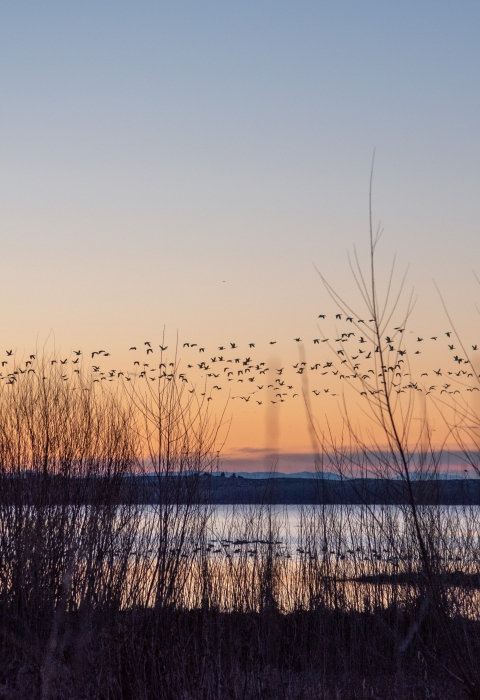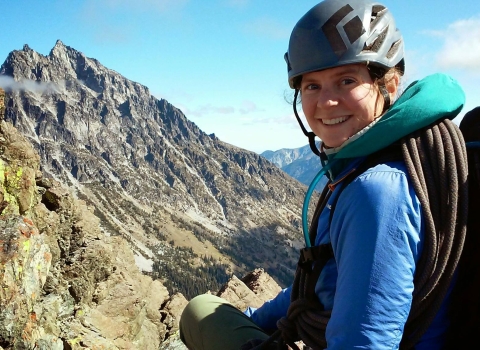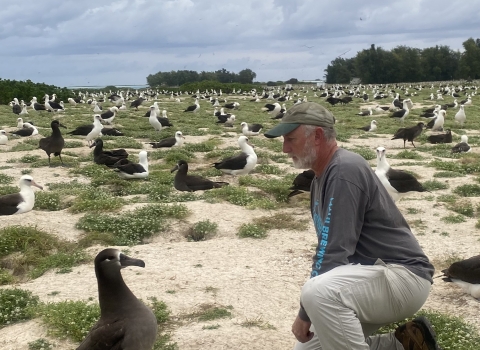I’m new to the Pacific Northwest. Where I grew up, seasons were barely detectable in the temperate Mediterranean climate, where intermittent rivers would only flow after a rare, substantial rainstorm. But here in Idaho, the seasons are distinct; there is ample water flowing in the rivers and a wonderful spectacle of wildlife and flora that flourish in the spoils of that precious water.
I live and work in the Treasure Valley of Idaho, one of the largest metro areas in the Pacific Northwest, and am fortunate to call Deer Flat National Wildlife Refuge an “office” from time to time. Deer Flat NWR is located fewer than 30 miles from the bustle of the state capital of Boise and within the city of Nampa — Idaho’s third largest city and one of the fastest growing cities in the country.
The drive approaching Deer Flat NWR is interspersed with suburban development and farm fields, and there’s a specific moment turning onto the refuge when I feel a notable shift in perspective, a threshold crossed, and suddenly the capital city where I just came from seems a thousand miles away. As I make my way down the windy road, I always look forward to the first glimpse of Lake Lowell; so far, no two mornings have looked the same.
I arrived in Idaho in the fall of 2022, when hunting at Deer Flat was in full swing; I could hear the distant sounds of hunters in their pursuits of pheasant, quail, partridge, mourning doves, ducks, coots, and deer.
Last year, fall weather gave way early, as the seemingly impatient winter barged in and has held tight into early spring. The trees quickly traded their turning leaves for bare limbs, where bald eagles would perch, their large silhouettes unimpeded, blocky, and conspicuous. Numerous species of waterfowl continued to provide the backdrop of consistent sounds, their quacks, honks, and cackles resonating from the lake surface to the sky. I’d take breaks during the day to walk down to the water’s edge or visit the bird blind to open a window and be amused by the fluttering of white-crowned sparrows at the feeders and shuffling of quail below; they’d go about their business, unaware of my observing from just a few feet away.
True winter arrived, and the lake froze over — the winter solstice was a spectacular day, as icy in the air as it was under foot. And just before Christmas, a fresh, thick layer of snow covered the frozen lake. Eagles and ravens looked busy flying back and forth to their bare perches, and the new-to-my-ears sounds of songbirds I had only previously known from field guides spilled sweetly from the forest as I tried to spot them. Winter here is magical.
Spring has snuck in under the guise of a prolonged winter; however, the days are getting longer, migrating birds are moving out as breeding birds make their way in, and the activity at Deer Flat NWR will soon shift focus to Lake Lowell and its riches. Boats will paddle and buzz the lake through the hot summer months, and thousands of families and visitors from all around the Treasure Valley will flock here to enjoy the lake until the end of September when the boating season ends to make way for migrating and wintering wildlife.
And soon enough, the inevitable tilt of the Earth will create the conditions to welcome another fall, then winter, spring, and summer… I look forward to witnessing the full cycle and greeting the seasons as they emerge again, over time, like reliable and familiar friends.
Deer Flat National Wildlife Refuge protects a wide range of wildlife habitats: the open waters and wetland edges of Lake Lowell, the sagebrush sagebrush
The western United States’ sagebrush country encompasses over 175 million acres of public and private lands. The sagebrush landscape provides many benefits to our rural economies and communities, and it serves as crucial habitat for a diversity of wildlife, including the iconic greater sage-grouse and over 350 other species.
Learn more about sagebrush uplands around the lake and the grasslands and riparian riparian
Definition of riparian habitat or riparian areas.
Learn more about riparian forests on the Snake River islands. The variety of habitats makes the refuge an important breeding area for resident and migratory birds, including providing one of the few nesting areas for western and Clark’s grebes in Idaho. The refuge is also a significant resting and wintering area for birds migrating along the Pacific Flyway, including spectacular concentrations of mallards and Canada geese. Because of its value to birds, Deer Flat National Wildlife refuge has been declared an Important Bird Area by the National Audubon Society.
The refuge works with community members, as well as traditional and non-traditional partners, to co-design programs around community priorities using the Urban Wildlife Conservation Program Standards of Excellence. The refuge welcomes diverse communities to connect with nature and each other through free educational and outdoor recreational experiences.












